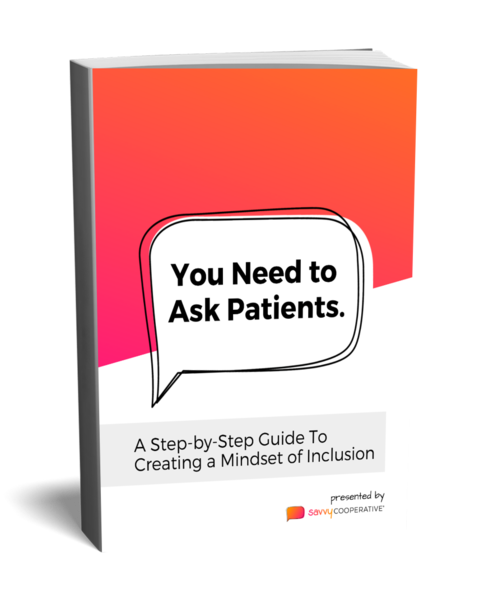Learning how to do the research
And all that was going well and good until I started to get a whiff of some of the patient insights research that was happening.
I began to realize that I had taken my training for granted. Sure, I'm a PhD-trained qualitative researcher and human factors engineer who worked extensively on patient preferences and patient reported outcomes (PROs), but I learned these skills just like the rest of ‘em!
So much of my knowledge base came from learning as I went, studying new qualitative techniques, UX design, design-thinking, and product design as needs came up. I firmly believe these skills can be taught and acquired, and perhaps that is what helped me ignore that our clients outright lacked these skills. I was hopeful they'd learn them in an effort to do the work.
As a busy entrepreneur myself, I get that time is a luxury not everyone or every company has. But the downside of approaching patient insights research haphazardly is that the results could be pretty meaningless, either because they lack substance or they inappropriately support your hypotheses because your questions were loaded with confirmation bias.

What bad research looks like
Over time I began to see that just because clients wanted to ask patients didn’t mean they had any idea how to do it well. Many clients love to use surveys to collect patient insights (not my favorite, by the way, but that’s for another post) and would send us their survey questions to program and be disseminated to our Savvy patients. We'd take a look with mild horror and politely say "hey, would you mind if we made some suggestions?" Of course they loved the extra help.
We often see survey questions with response options that make no sense contextually or are not actually discrete choices. We’ve heard in-depth interviews take place on our platform with moderators reading robotically from a script and missing all the opportunities to follow the thread of what a patient is sharing to uncover rich insights.
We see surveys and interview questions alike chock full of yes/no and close ended questions. These questions lose so much incredible and informative data. For example, asking "would you use this product to manage your medications?" is so much different than “tell me about how you currently keep track of your medication”; asking “have you been in a clinical trial before?” will render a different response than “how do you feel clinical trials fit into your treatment options?”
My greatest fear when it comes to patient insights is that companies will do poorly designed and executed user research, get lousy data, and then brush off patient insights as not being useful or valuable. And then we are back where we started, with companies guessing about patient needs.
So Savvy 2.0 expanded our offerings from just matchmaking to really helping support our clients in doing the work. In practice, this means that for many clients we are taking on the research in-house and developing and executing on their behalf (with their input, of course), and for other clients we are taking the time and teaching them how to do it better on their own. And the latter part is what this next series will unpack: how to conduct better patient insights and user research.
We will be taking you on a multi-part journey through the dos and don’ts of patient insights research. In the series, we’ll cover:
- How to identify your research questions and work backwards from there
- How to choose the right methodologies to collect patient insights (hint: not just surveys!)
- How to develop appropriate questions and discussion guides
- How to analyze the data (yes, you can analyze qualitative data)
- How to share learnings with your colleagues and organization
Patients win when companies do better user research, so we are excited to help teach you how to make that happen in the coming weeks. Stay tuned!
——————————————————
About Us
Jen Horonjeff, PhD, is a life-long autoimmune disease patient and brain tumor survivor turned human factors engineer, academic, FDA advisor, and now the founder & CEO of Savvy Cooperative.
Savvy Cooperative helps the healthcare industry create patient-centered products and solutions by providing a marketplace for patient insights. Pharma and startups alike can connect directly with patients to participate in clinical, UX, and market research. Savvy’s unique co-op model leverages its members’ networks to quickly recruit diverse patients, and pays patients for sharing their insights! Savvy’s award-winning co-op has been featured in FastCompany, TechCrunch, The Boston Globe, and named one of the 50 Most Daring Entrepreneurs by Entrepreneur Magazine.
.png?width=300&height=69&name=SavvyCoop_HorizontalLogo_LargeFormat%20(1).png)
